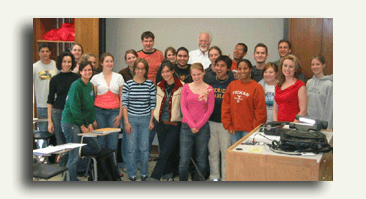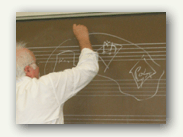by Gary Powell, Composer
EXECUTIVE PRODUCER: John Harms
OFF-LINE EDITOR: Glenn Wolfe
ON-LINE EDITOR: Bill Lewis
COMPOSER: Gary Powell
ORCHESTRATOR: Gary Powell
RECORDING & MIXING ENGINEER: Larry Seyer
(Musical Score Copyright 1989 Jesmax Music, BMI
Copyright IBM Corporation 1989 All Rights Reserved)
______________________________________________
The call came in from John Harms of River City Productions in Austin, Texas for an original film-score for an IBM project. I had composed and produced dozens of these in the past usually around some new computer chip rollout. This time, John says, “This one is different. No talking heads. Only beautiful shots of Texas landscapes and people.” The date is October, 1989!
This piece of work, without my planning it, was to soon set me up with Ted Kryczko of Walt Disney Records as more than just another song producer. This creative happenstance unknowingly presented a life-changing opportunity for this much younger Austin film composer. All I knew at that time was that these filmed scenes of Texas were beautiful, exciting to score and had a very real budget.
IBM installed a major video and slide projection system in a conference room solely designed to showcase “TEXAS” to foreign dignitaries. Wanting to eliminate any possible language barriers, they wisely let the music and cinematography do the talking.
The process was for me to compose the music first, then Glenn Wolfe would cut the video to my score. Glenn showed me all the footage he had amassed and how he planned to collate, staple and creatively glue this thing together. I decided to write the music within his organizational framework of different visual sections of landscapes, coastal and inland water, building-scapes, people, etc. It was obvious this film-score needed to be composed as an orchestral piece which would also give it a long shelf life. I delivered a midi-only score to Glenn for him to pre-cut his collected images. With a few timing changes, I then hired my regular orchestra players, mostly from the Austin Symphony Orchestra, and recorded and conducted the score from a click track to maintain sync with the now edited version.
As you watch, remember this was 1989 which preceded any non-linear video editors! I re-mastered the audio for this posting, which is now much improved from the 1989 technology. The dreaded tape hiss of the last millenium is now removed.
I would like to give special mention to the banjo and guitar parts performed by Danny Barnes. Although mostly improvised, Danny was musician enough to integrate some of my individual orchestral lines into his playing, which made his banjo and guitar parts sit within the score rather than just on top of it. Danny is a truly great player and musician.
Thank you, John Harms and Gary Schmidt, owner of River City Productions, for this pivotal musical scoring and career building opportunity!
THE RHYTHM SECTION
BANJO & GUITAR: Danny Barnes
ACOUSTIC BASS: Spencer Starnes
DRUMS: John Trainer
 Rich Harney is a small man by physical stature, but you’ll think again when when hearing him play piano.
Rich Harney is a small man by physical stature, but you’ll think again when when hearing him play piano. 




 A documentary hosted by art critic Tim Marlow on the
A documentary hosted by art critic Tim Marlow on the 


 I opened by singing
I opened by singing 